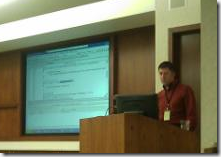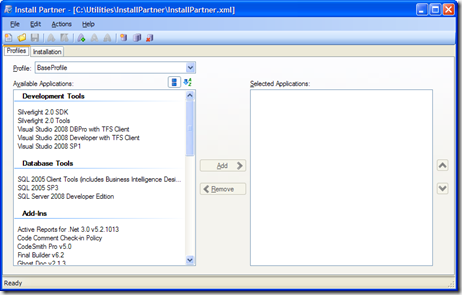Today was the second and final day of the 2009 Heartland Developers Conference. I was able to stick around through all the sessions today so I was able to take in a lot more content than yesterday. Much like yesterday, I found the non-technical sessions the most interesting – which seems to be a little counter-intuitive for a developers conference.
Here’s a quick run down on some of the sessions I attended today:
Smithying in the 21st Century - Neal Ford – This keynote was a discussion about predicting the future and how to ensure you don’t go the way of the dinosaurs. Although you may not be able to predict the next “big thing”, you should at least pay attention to technological trends and needs. This was not a technical keynote address but it did invoke a lot of thought which makes for an enjoyable talk.
The Natural User Interface: Multi-Touch and Beyond – Nathan Moody – this was a great overview of natural user interface (NUI) design in a multi-touch form factor. Nathan discussed various multi-touch technologies as well as common issues that need to be addressed when designing for multi-touch interfaces.
How to Kill a Project and Deflate a Team – Surviving a software death march – Mike Benkovich – in this talk, Mike covered various aspects of successful projects and teams.
An Introduction to .NET RIA Services – Adam Grocholski – in this talk, Adam introduced us to the .NET RIA Services framework. The main purpose of the .NET RIA Services is to streamline the development of n-tier applications in Silverlight by simplifying many of the common tasks that are required when writing software partitioned across multiple tiers. This was my favorite technical session of the day.
How NOT to give a talk! – Kent Tegels – a self-proclaimed “bad presenter”, Kent gave a great session on the habits of bad presenters as well as tips for correcting them. Tidbits such as interacting with the audience; not relying on PowerPoint slides; practicing, but not over-practicing the talk, and others. Overall, a useful session for anyone aspiring to present for their first time or anyone looking for tips on improving their presentation skills.
There were a couple of other sessions intermixed throughout the day but I don’t recall what they were off the top of my head.
This year’s conference was without a doubt a great use of my time. I picked up a few technical tips that I will take back to the office with me next week for further investigation (e.g. .NET RIA Services, jQuery, etc.). However, like I mentioned above, it’s the non-technical sessions that will give me the most food for thought (and debate fodder with co-workers) for the next few weeks. I will look forward to next year’s event!




